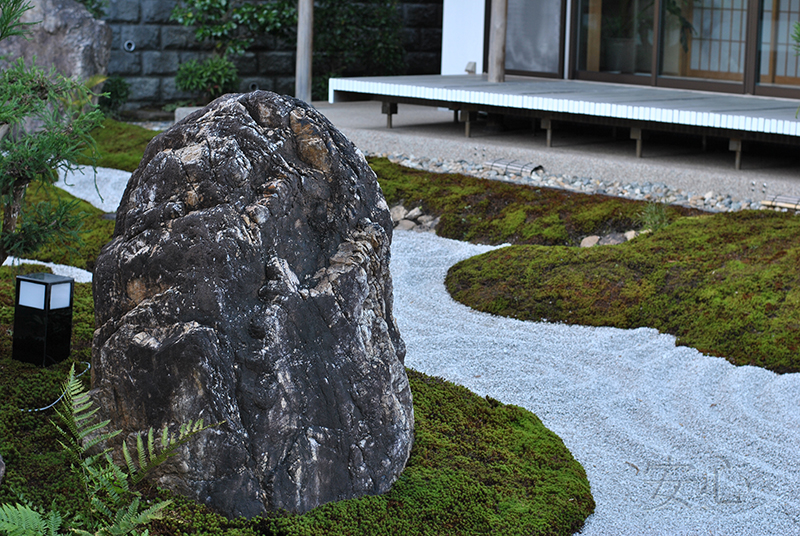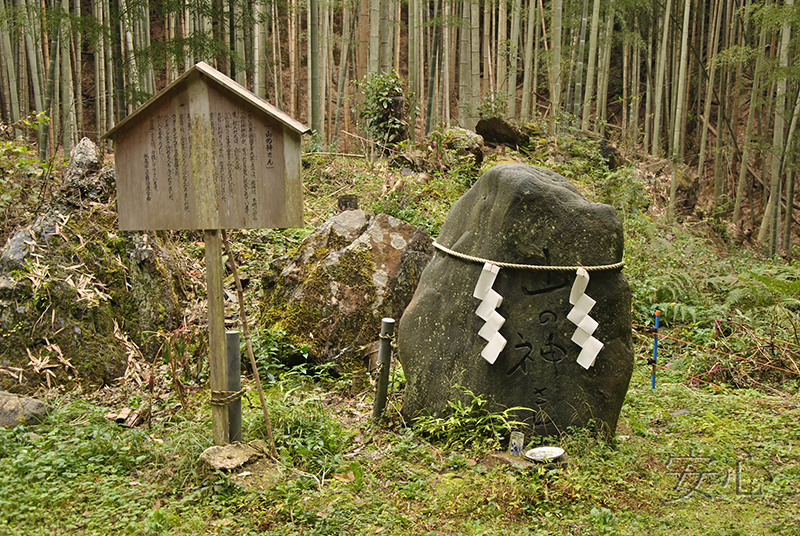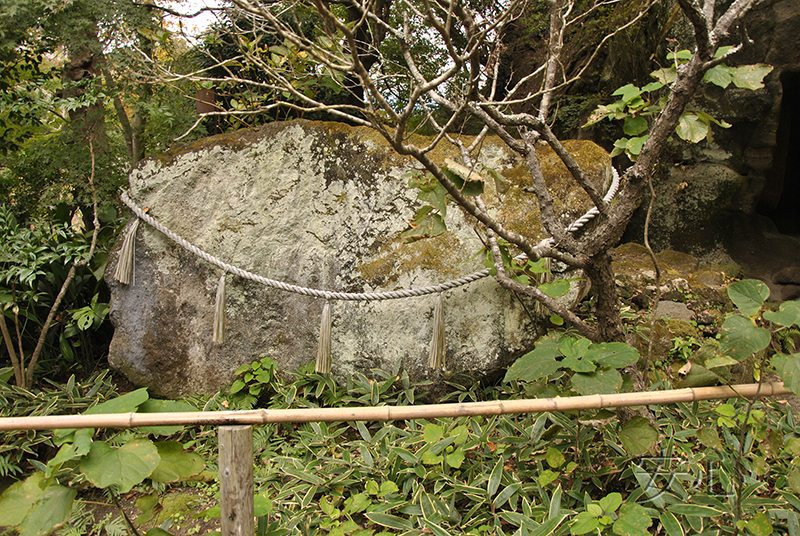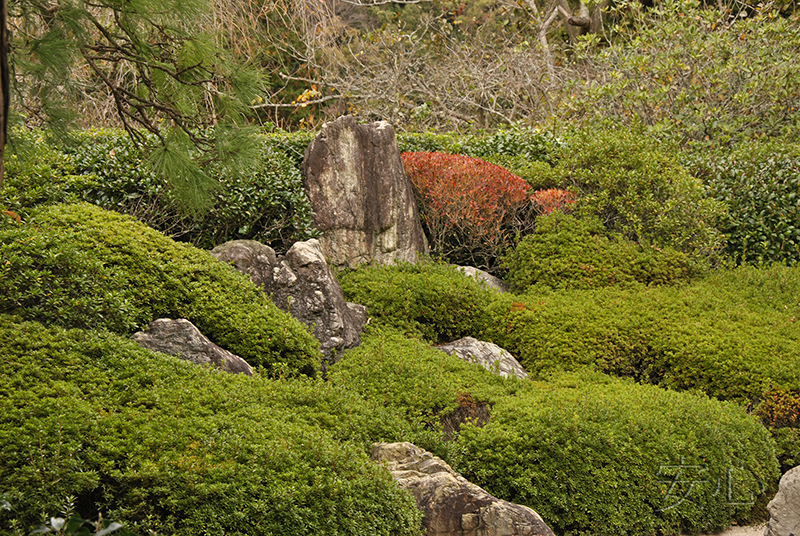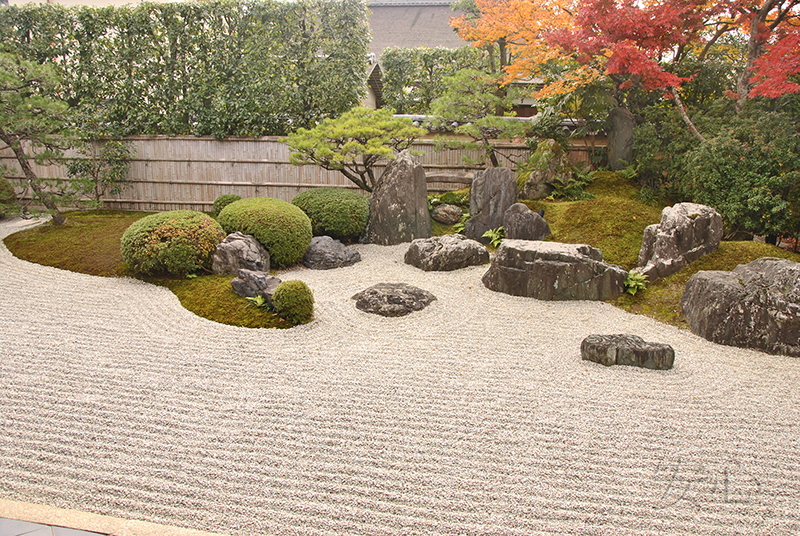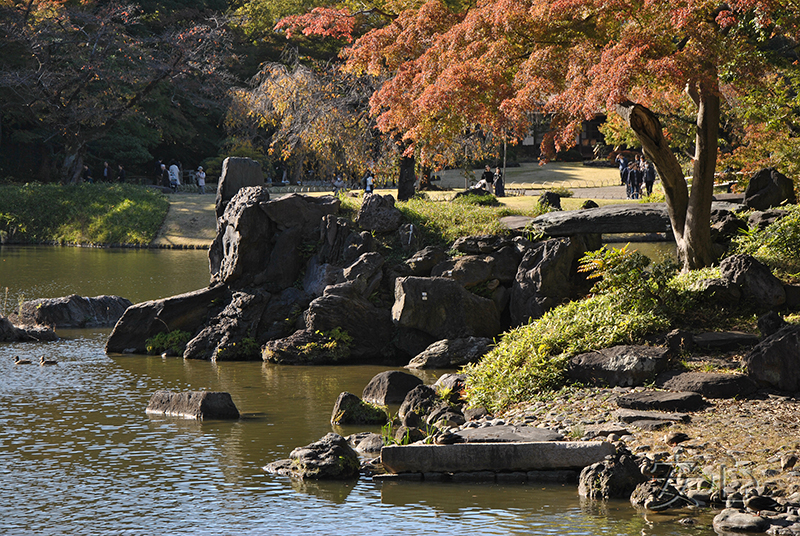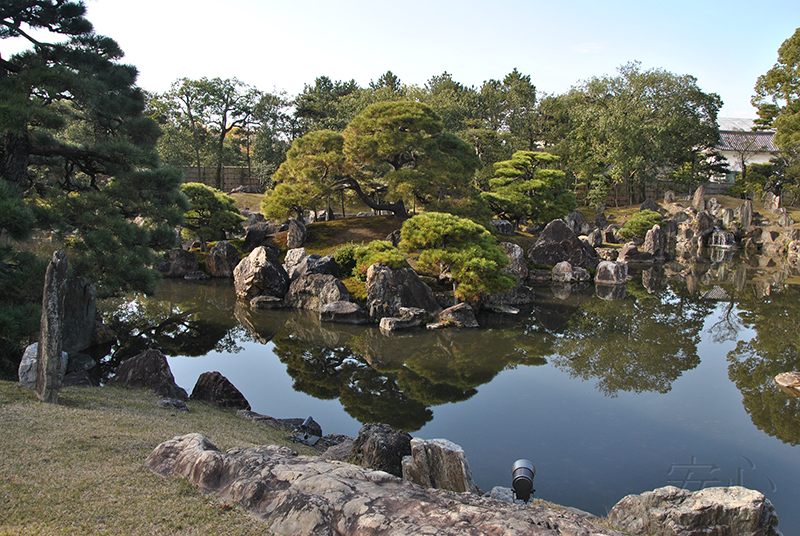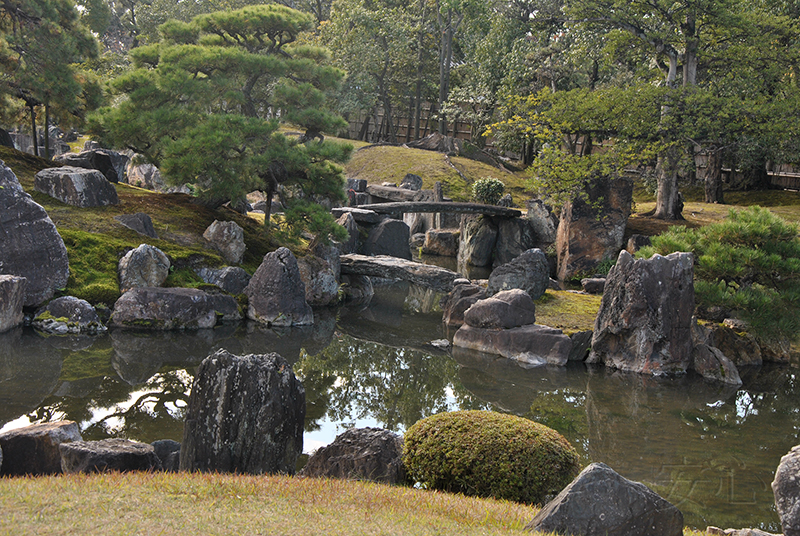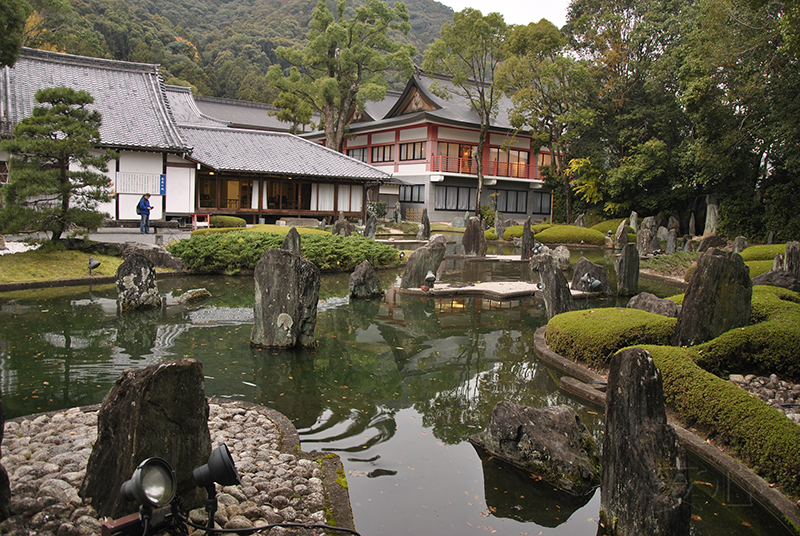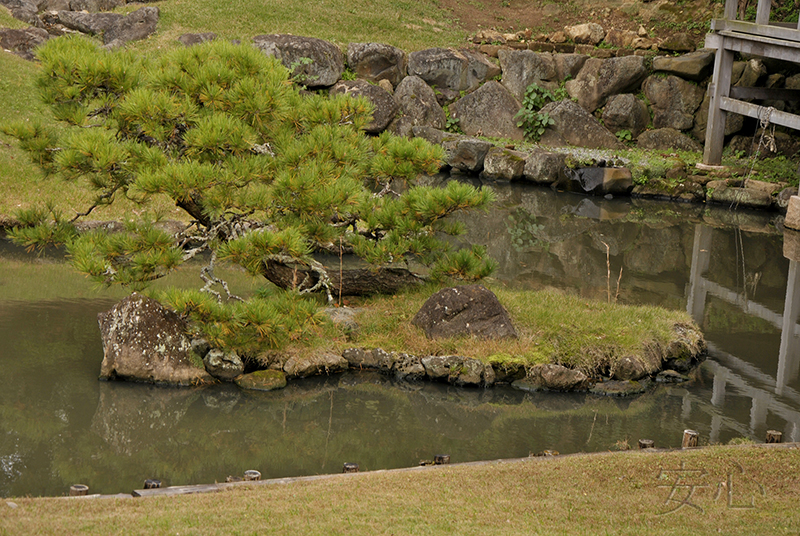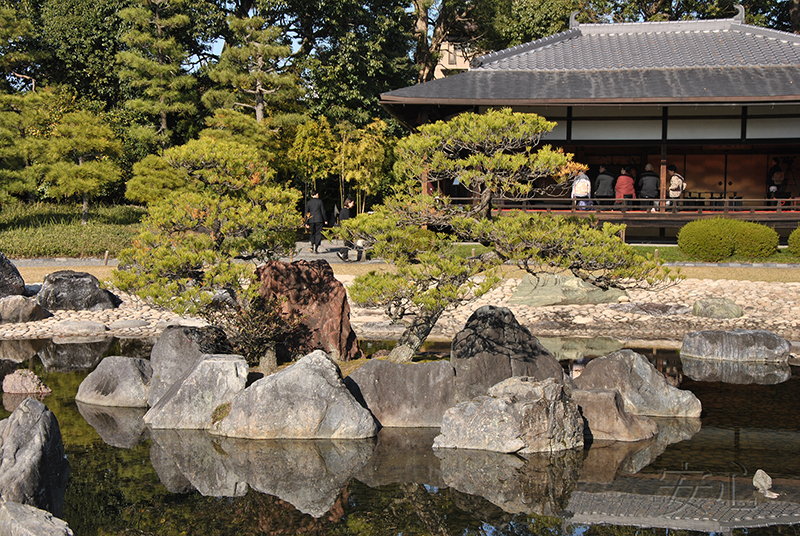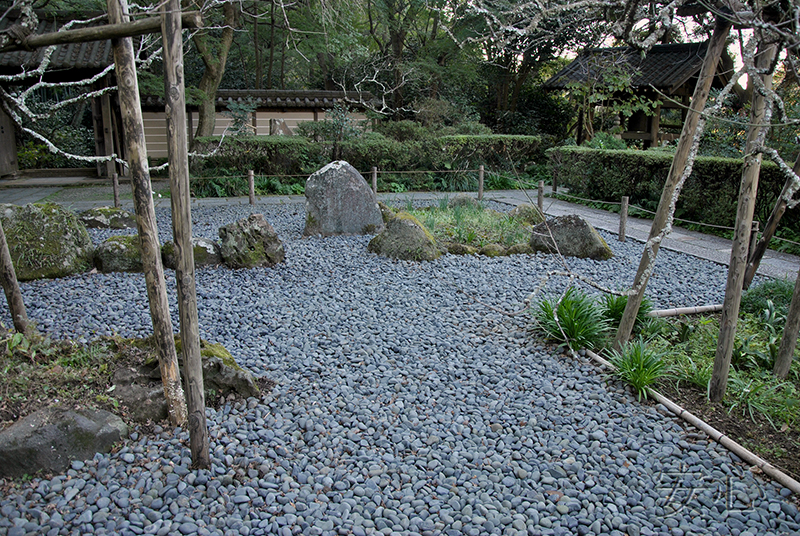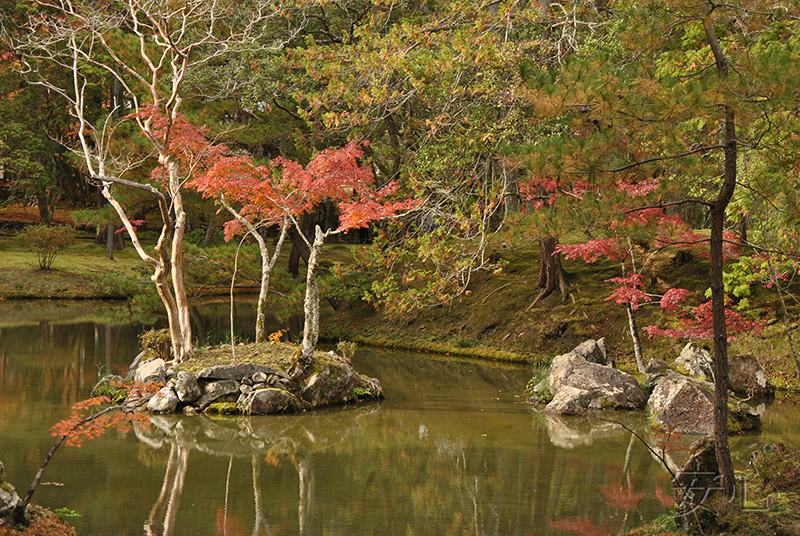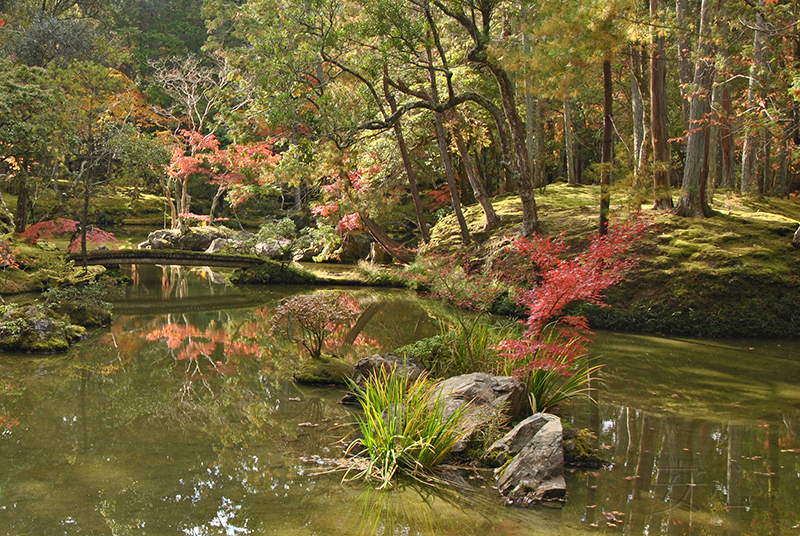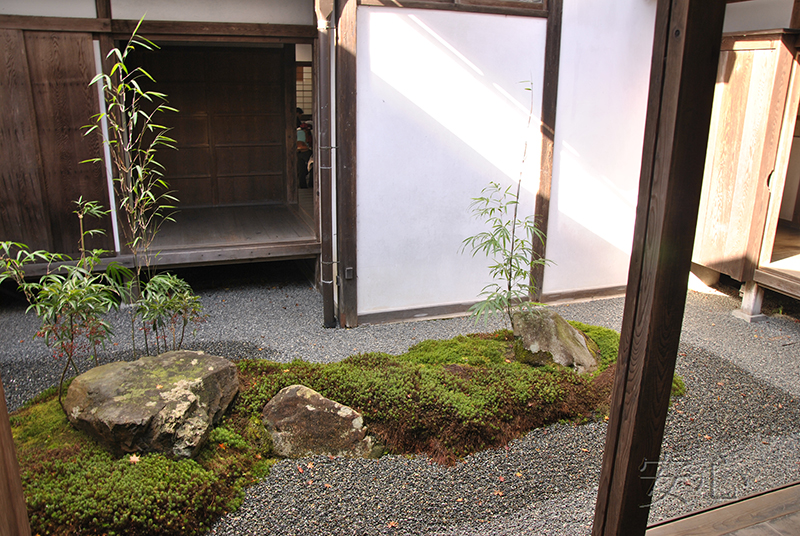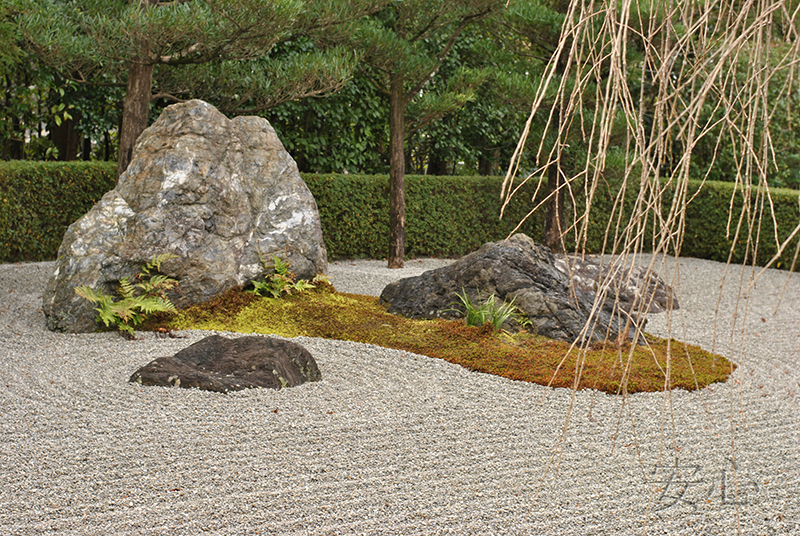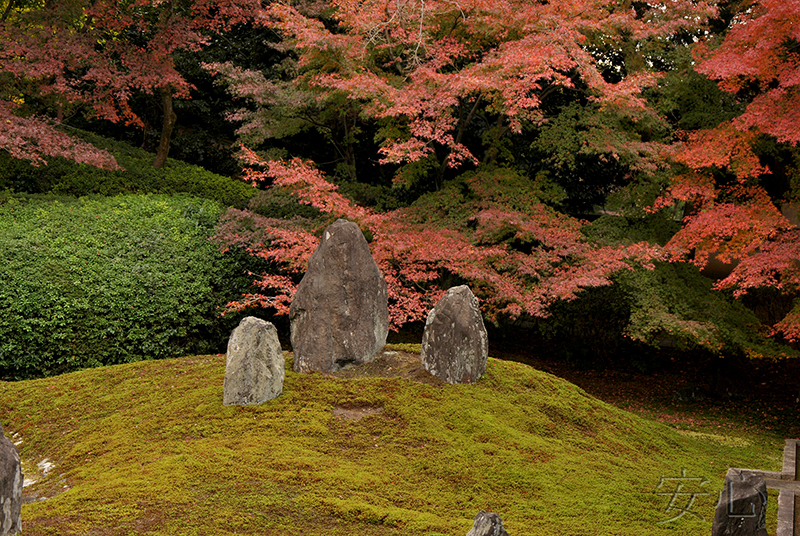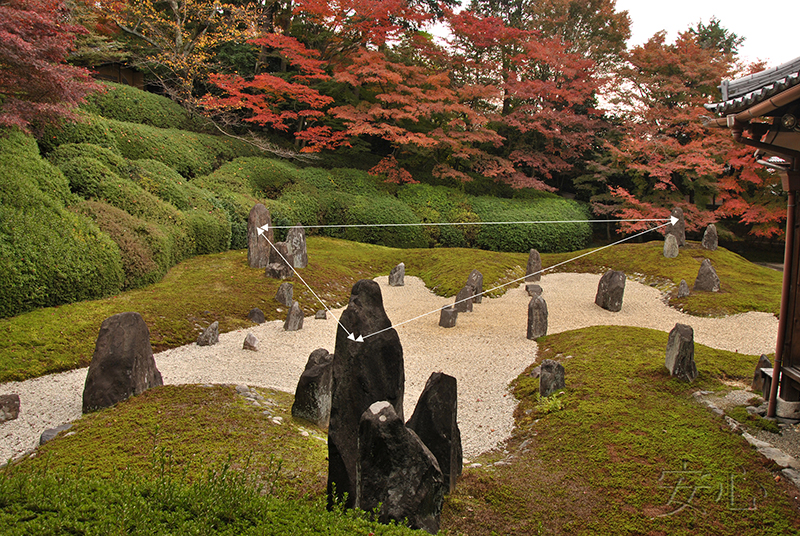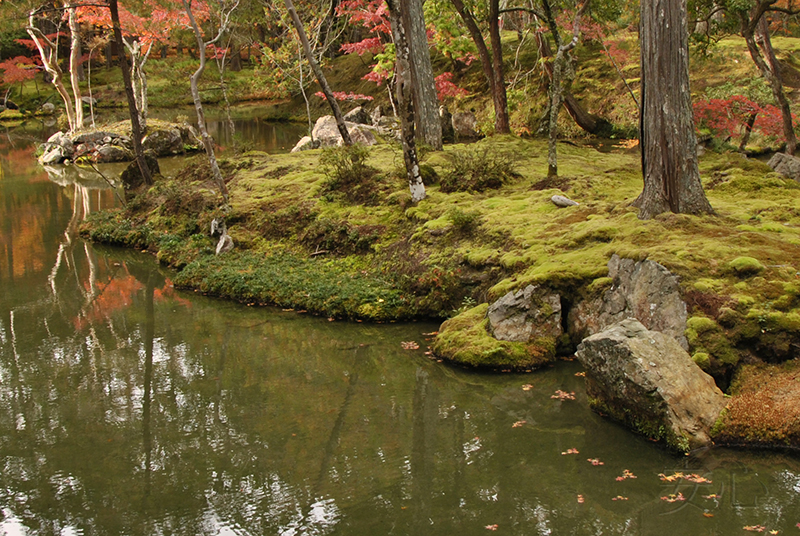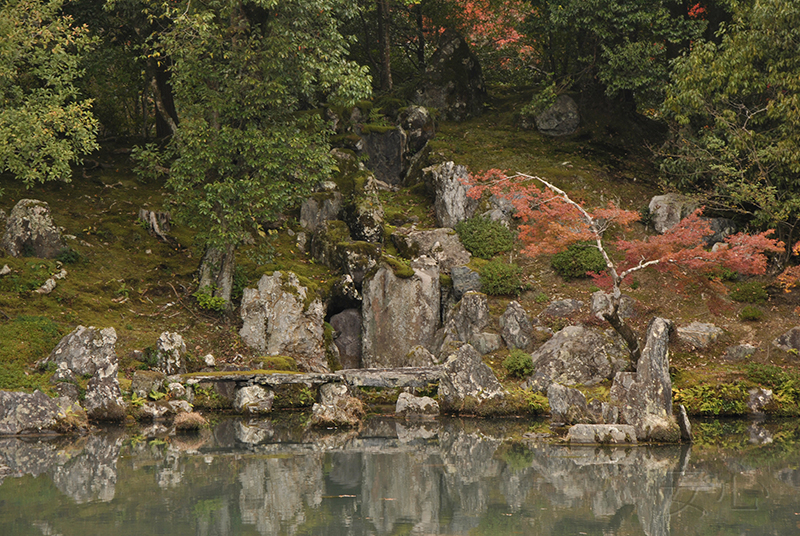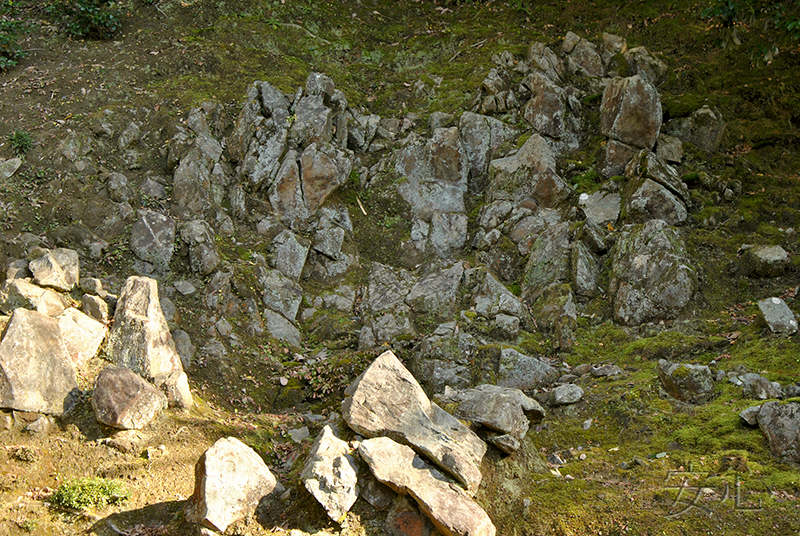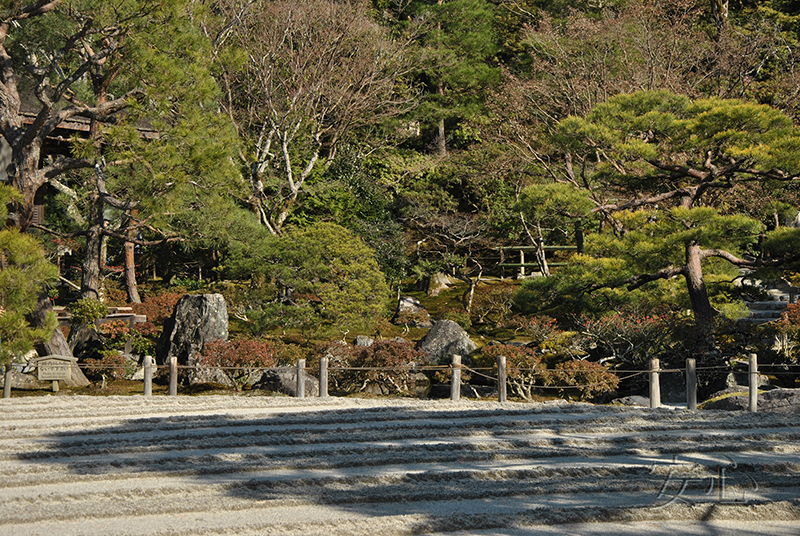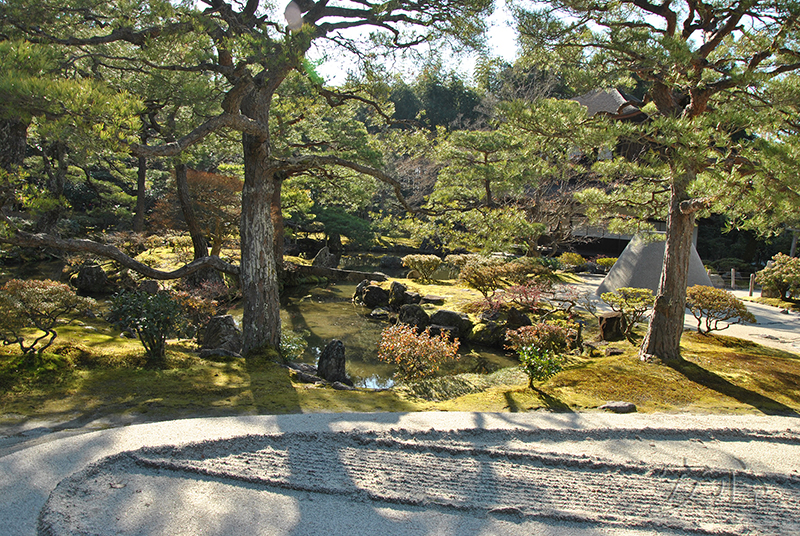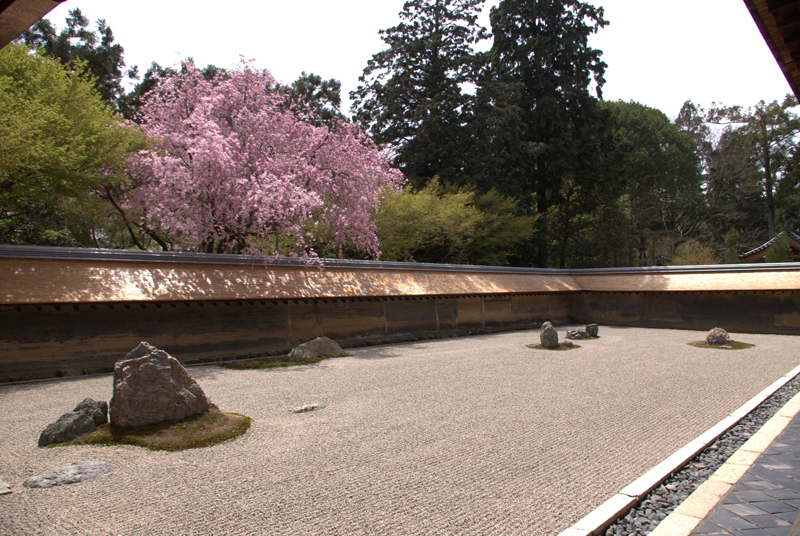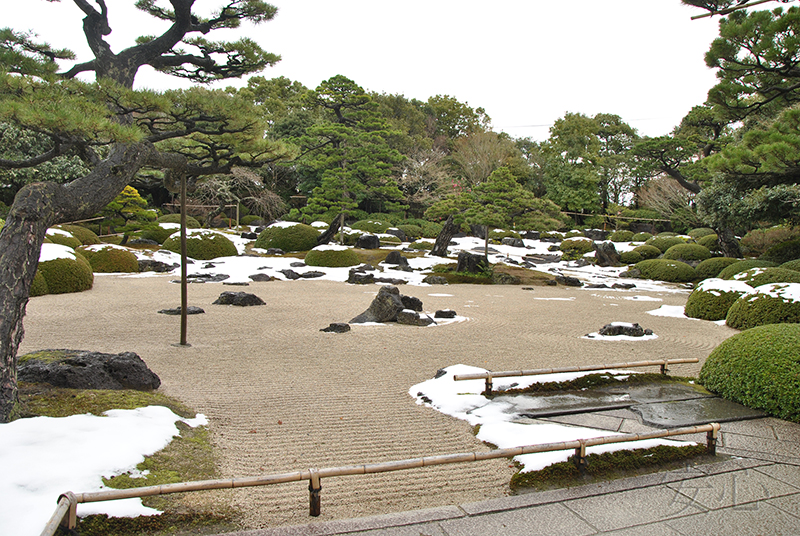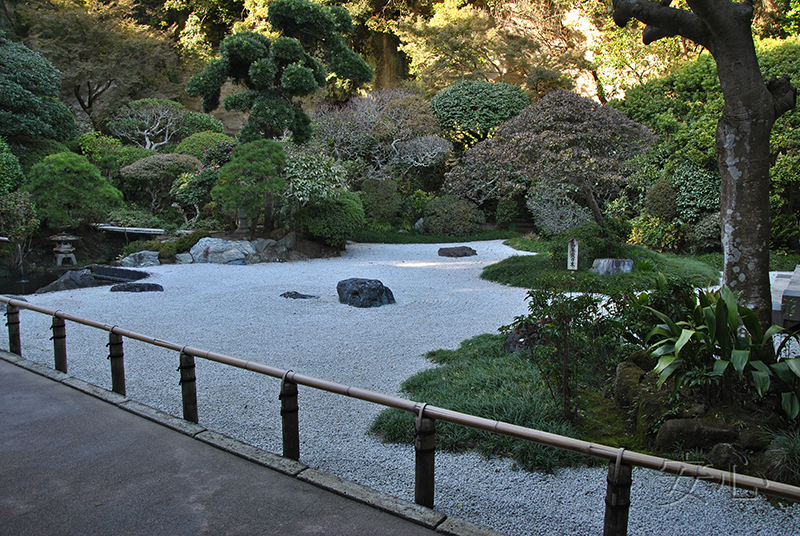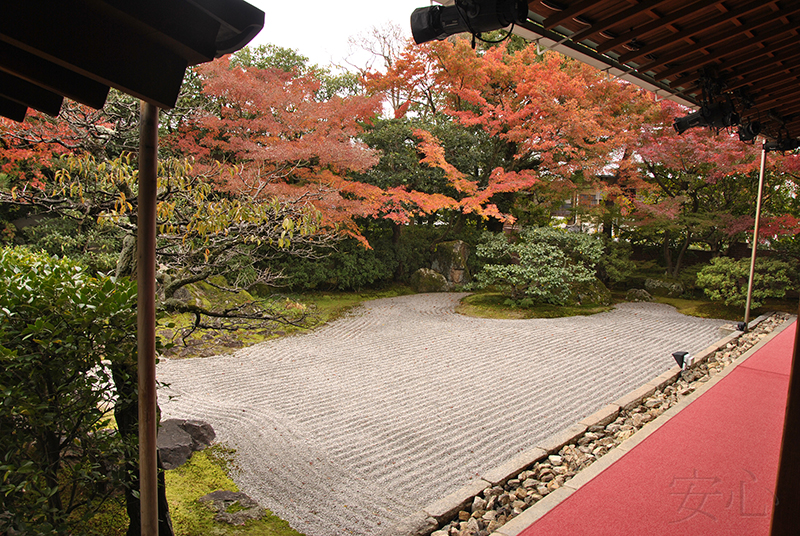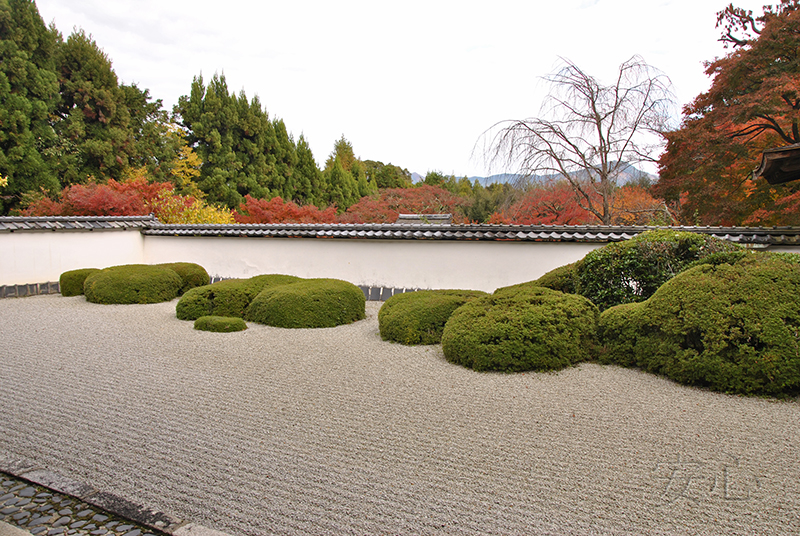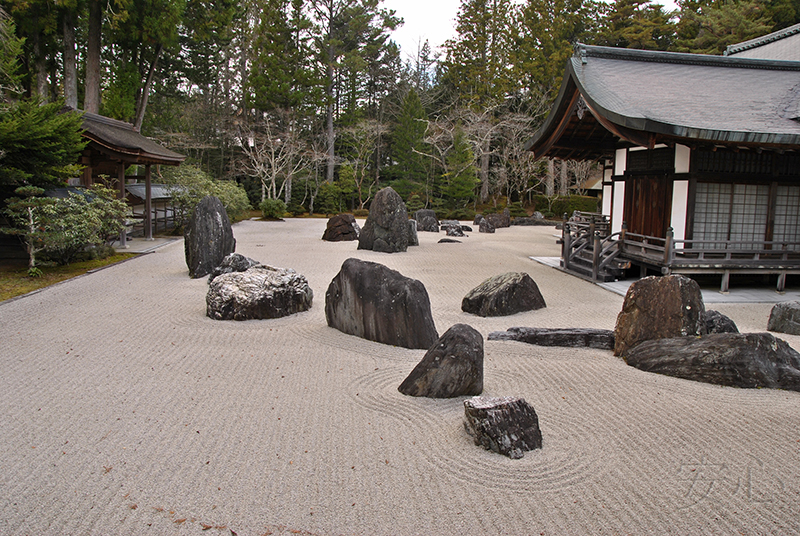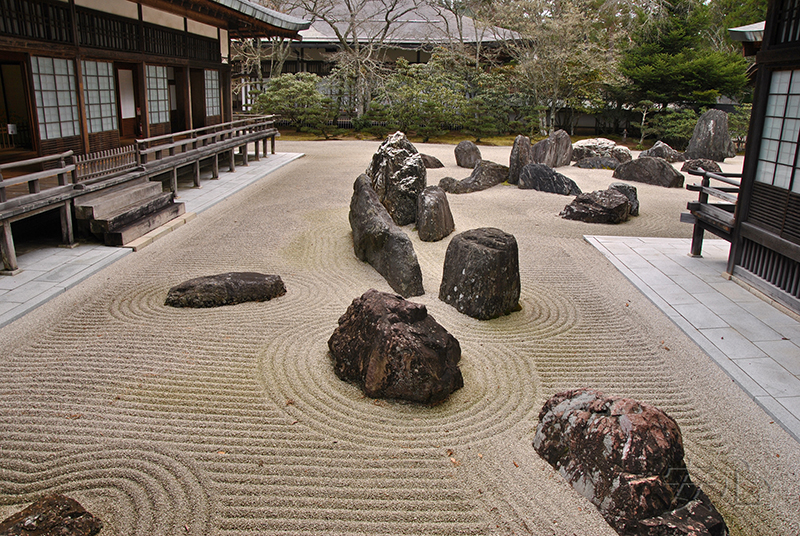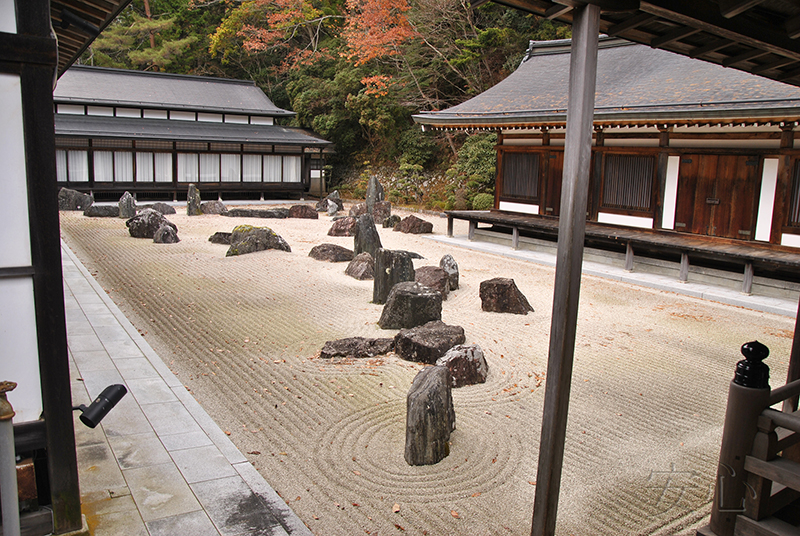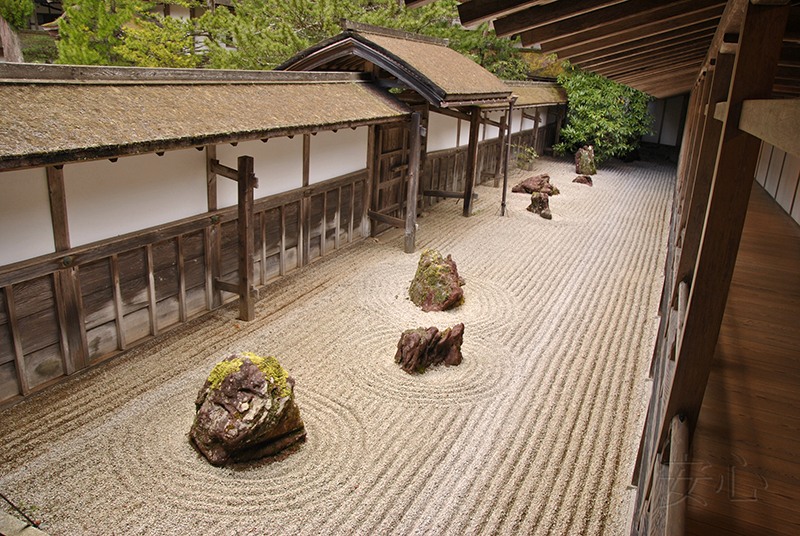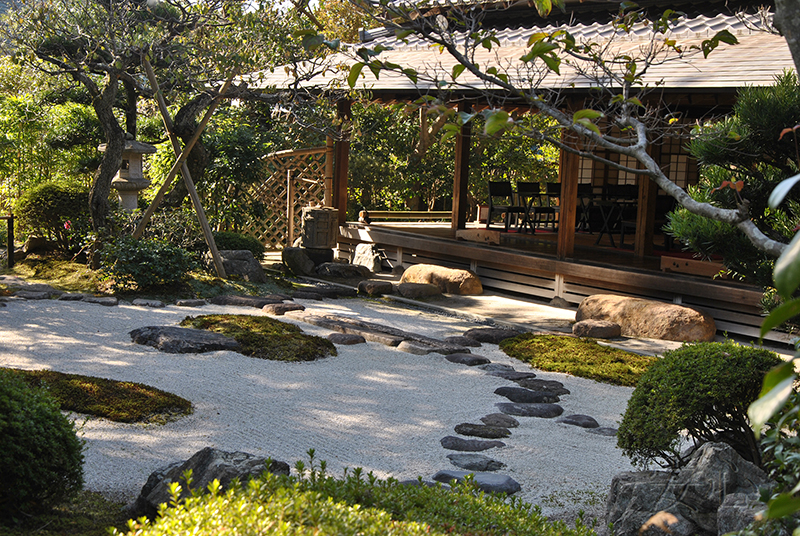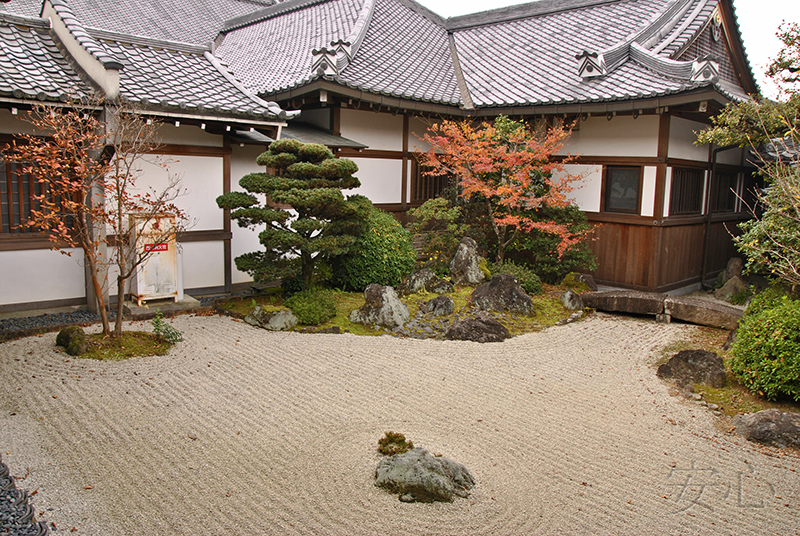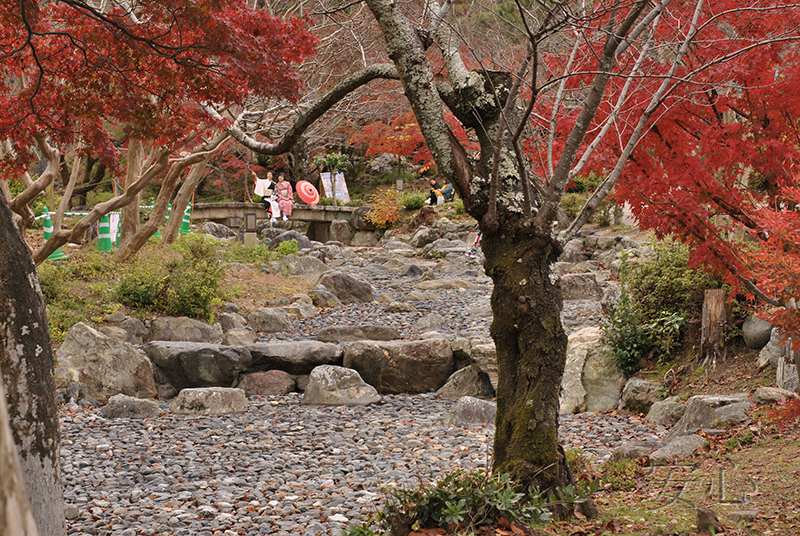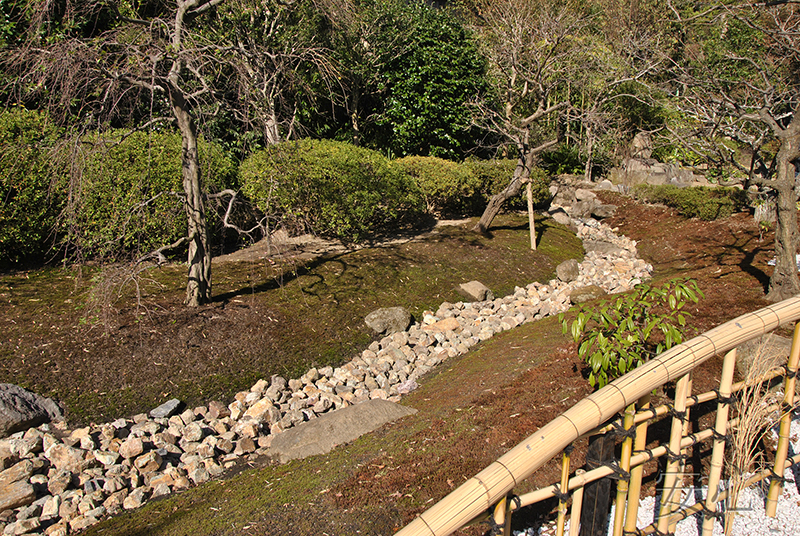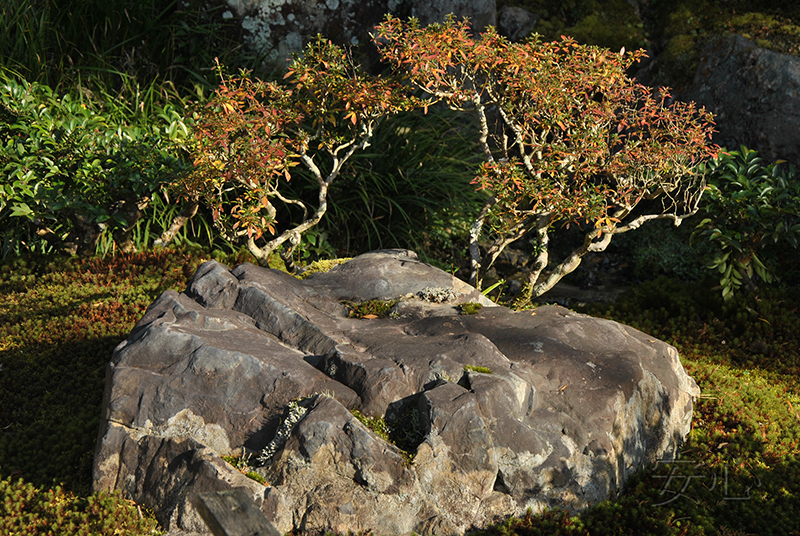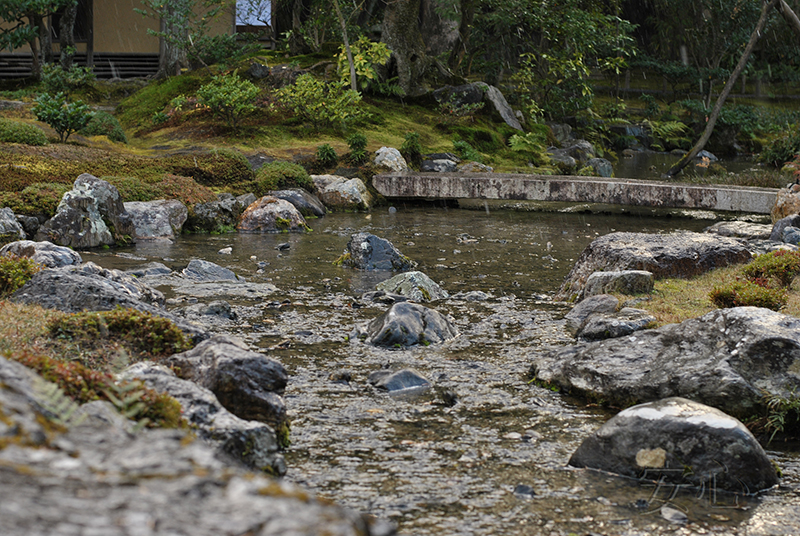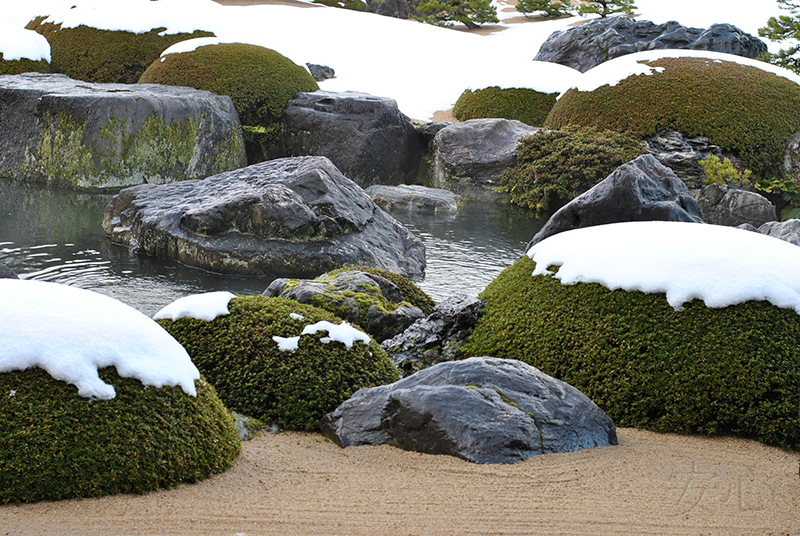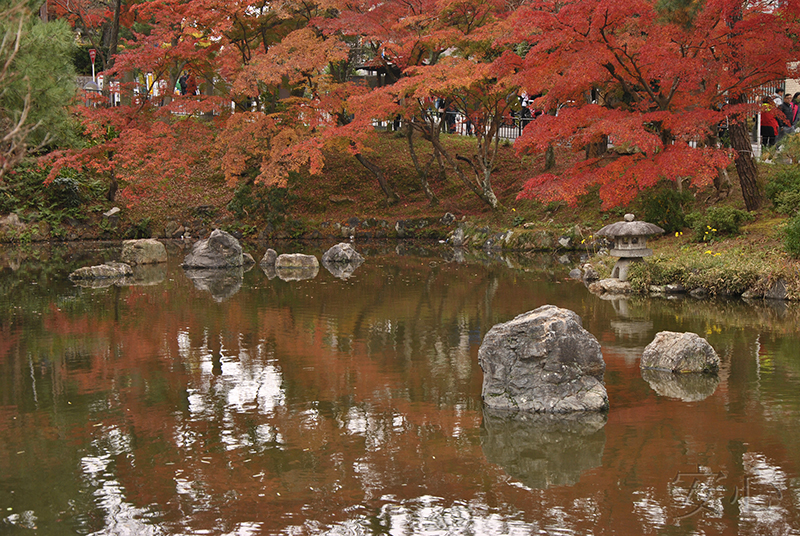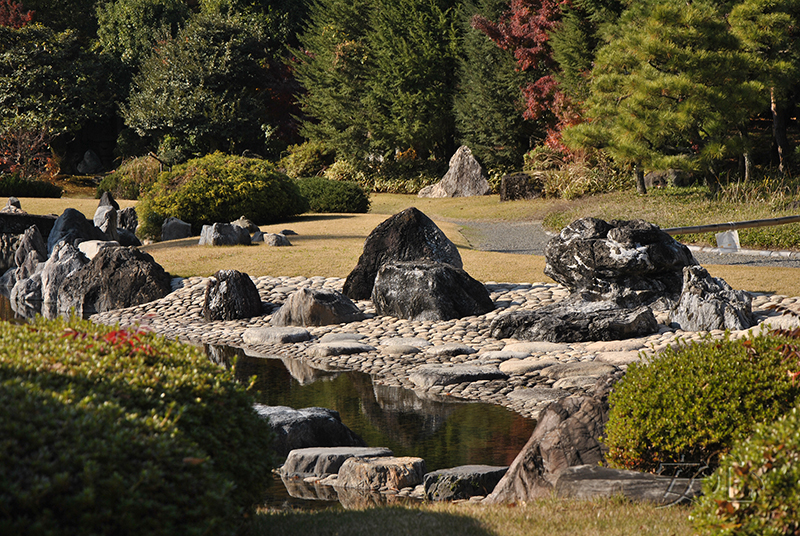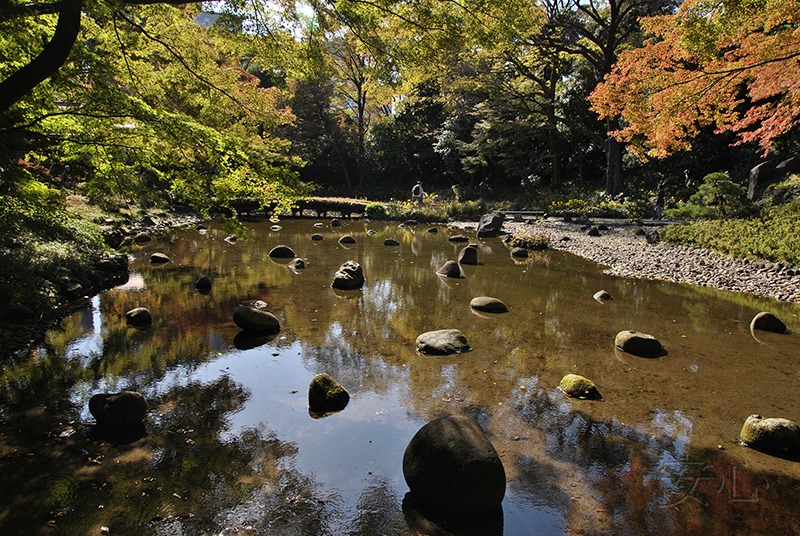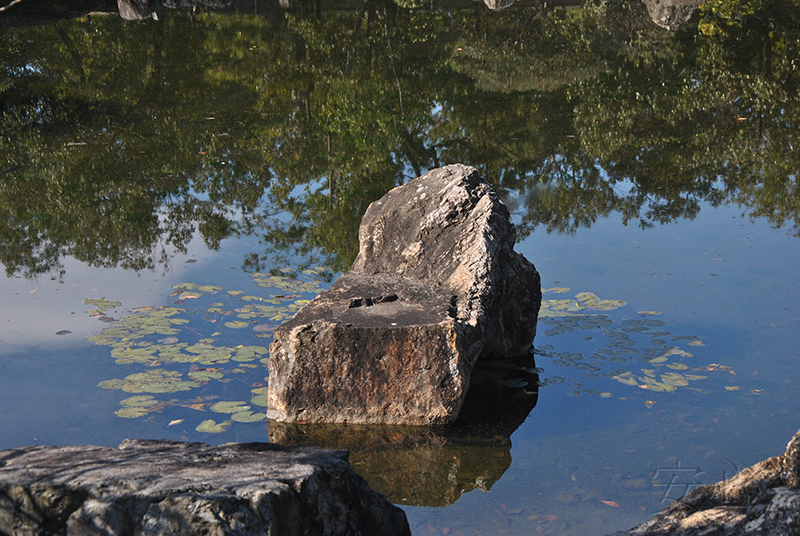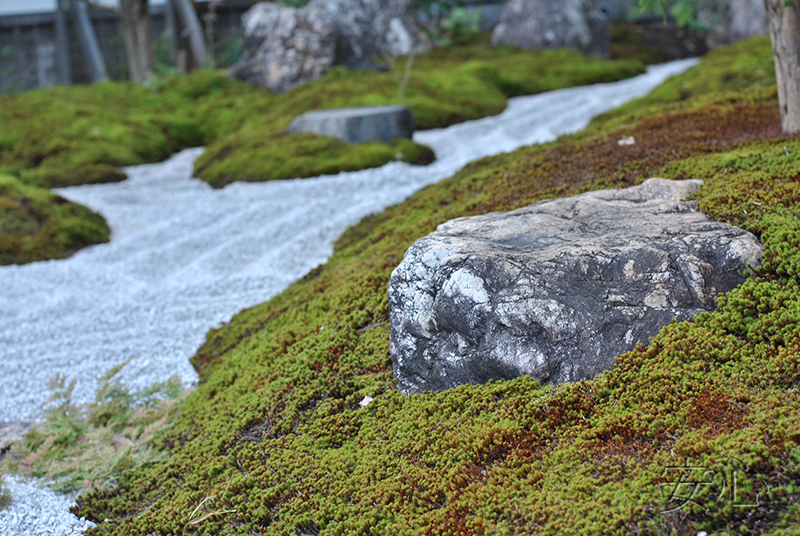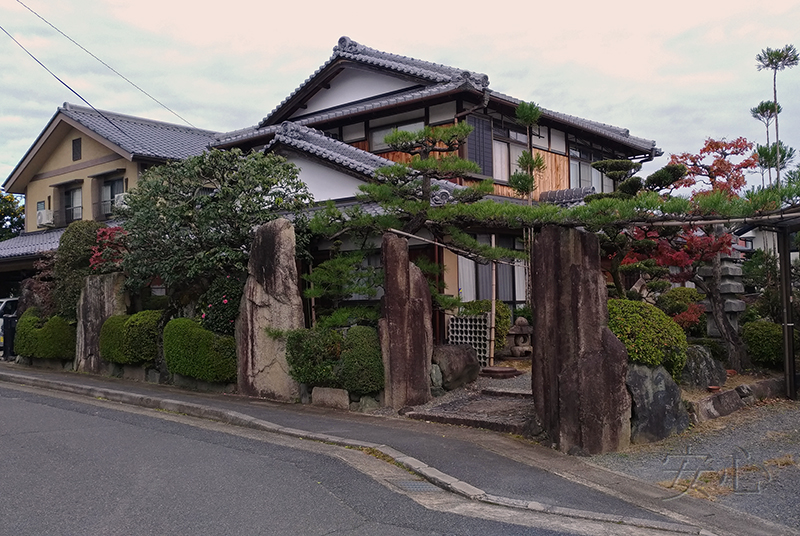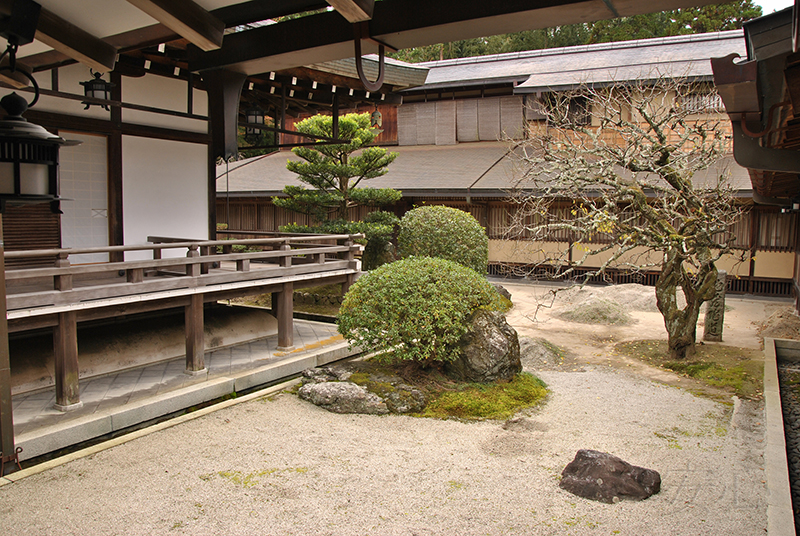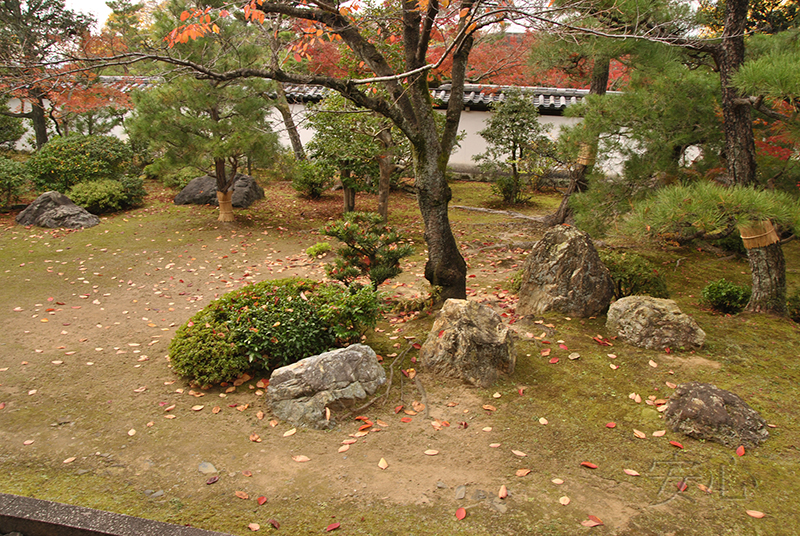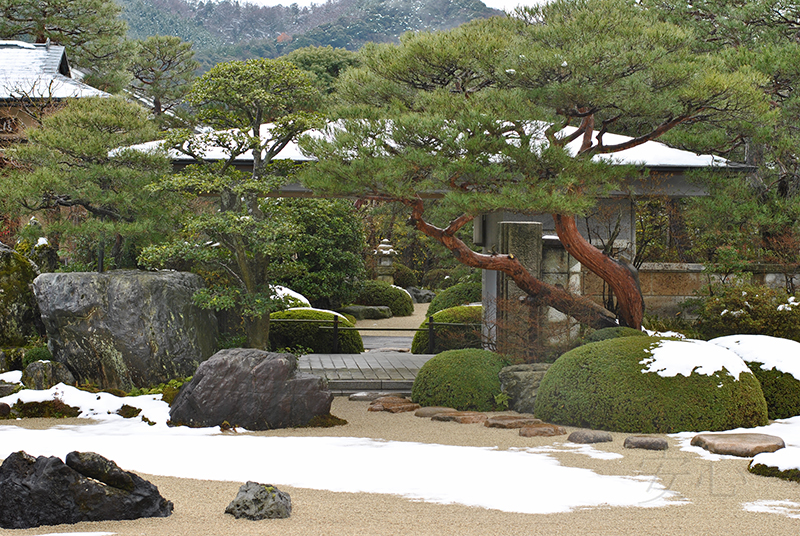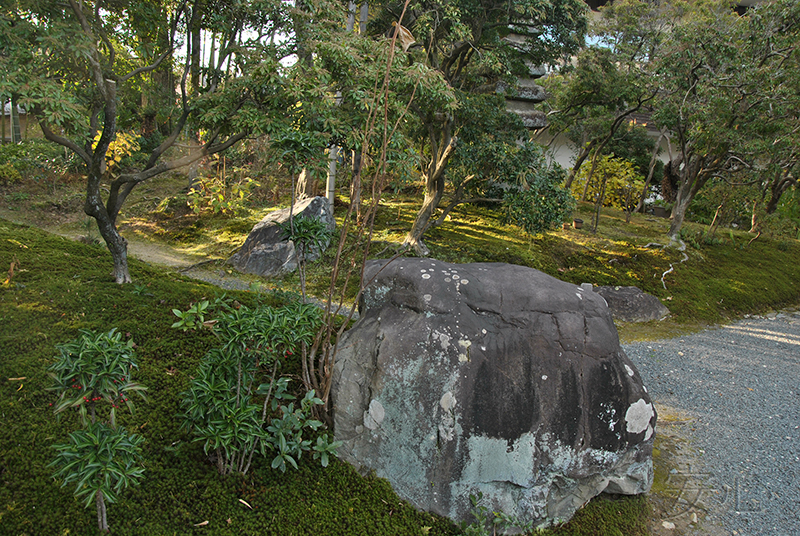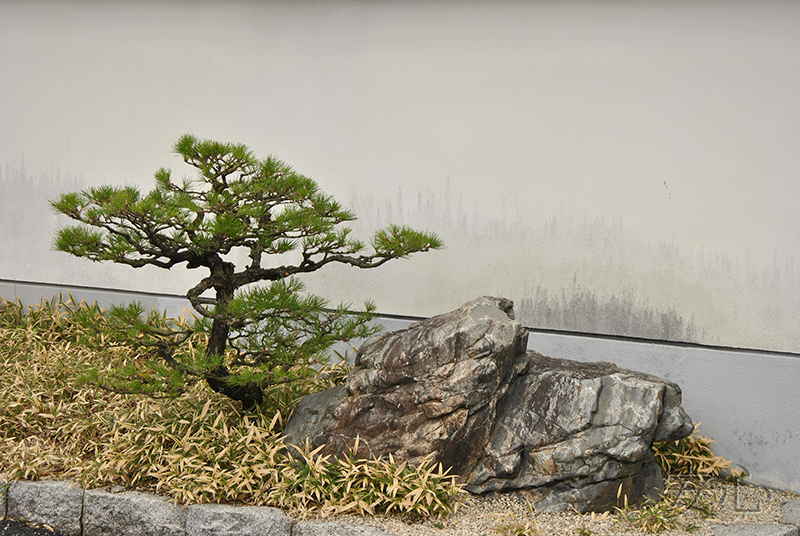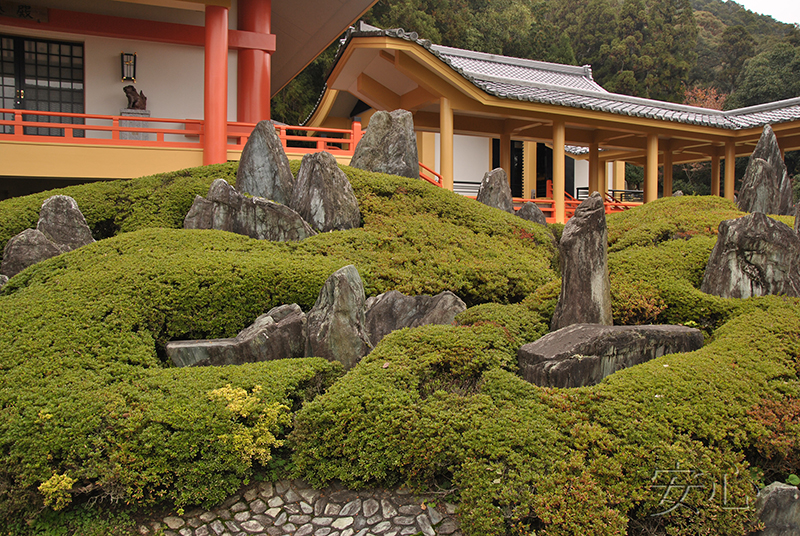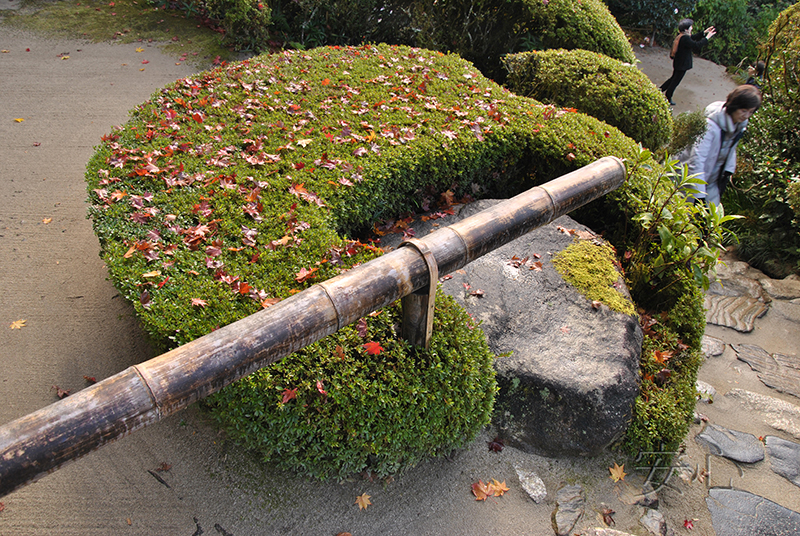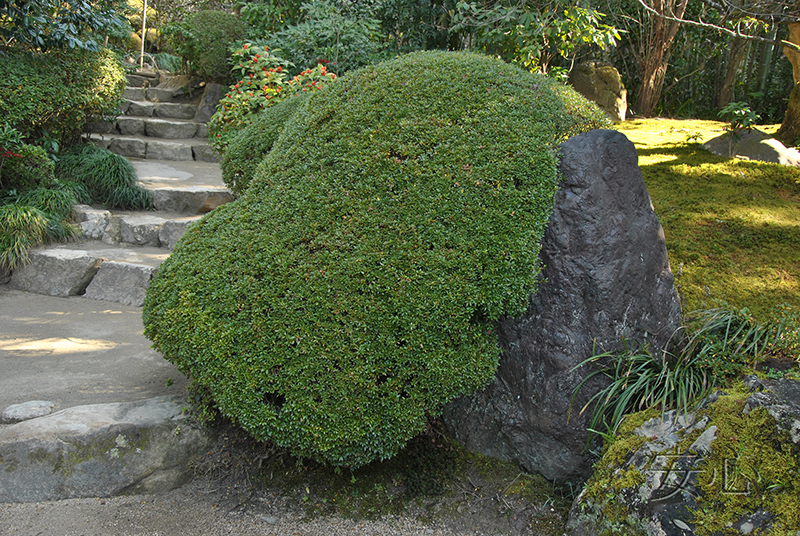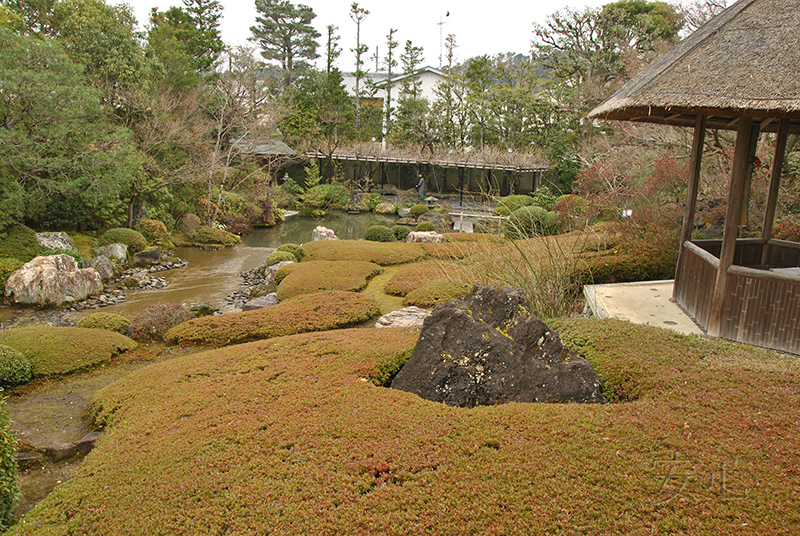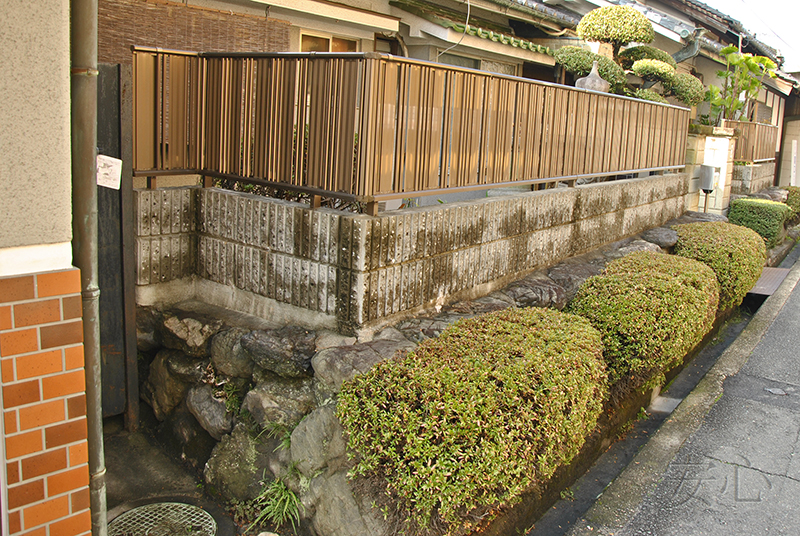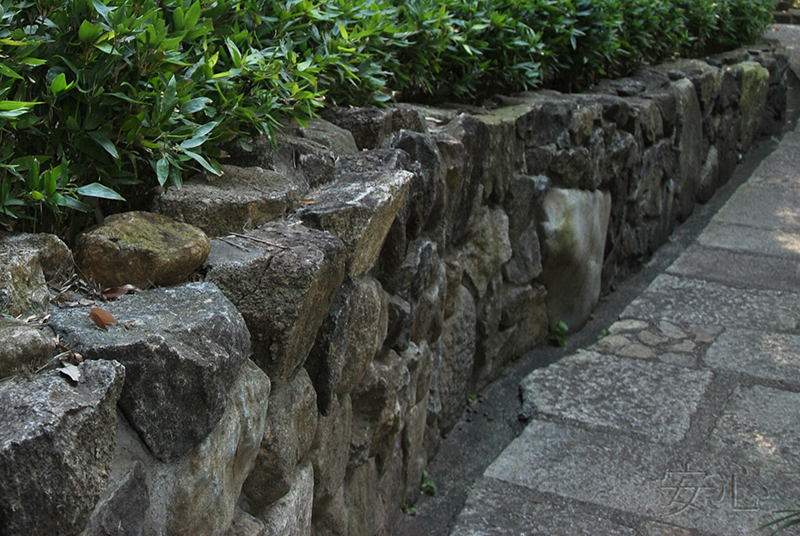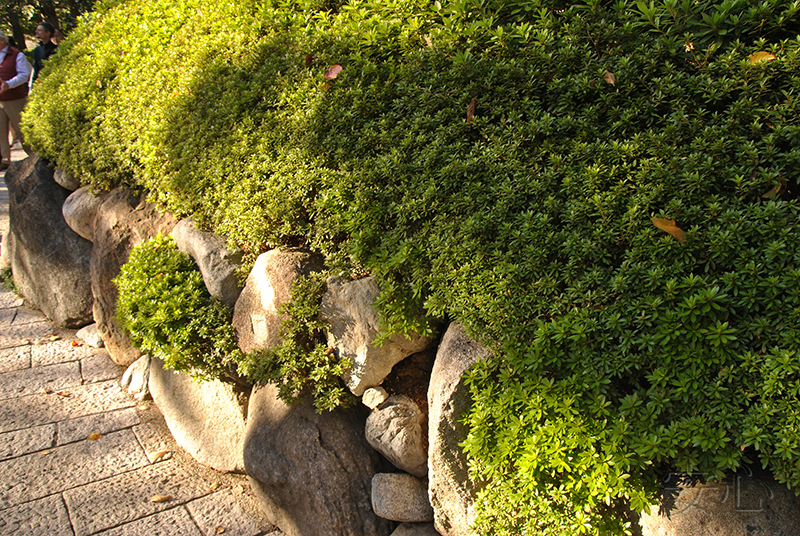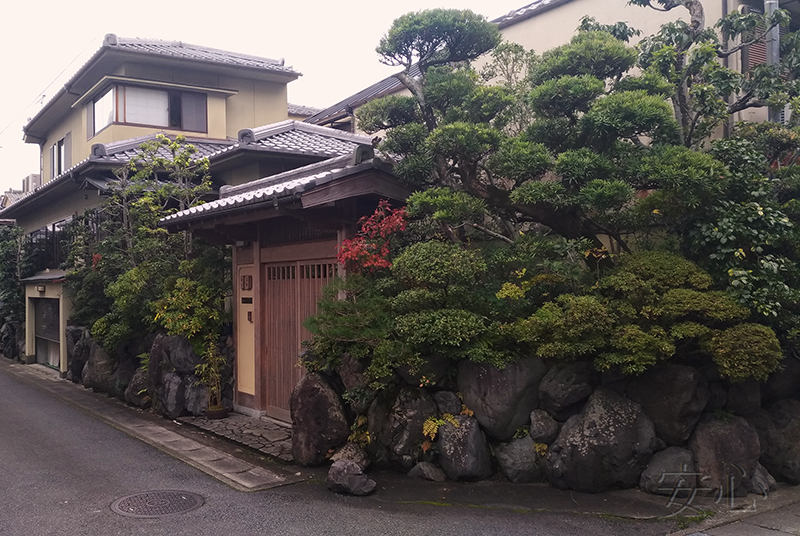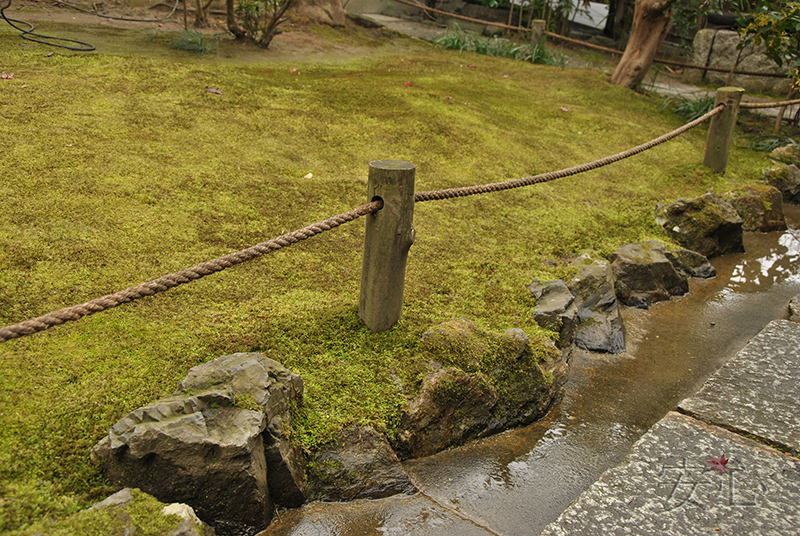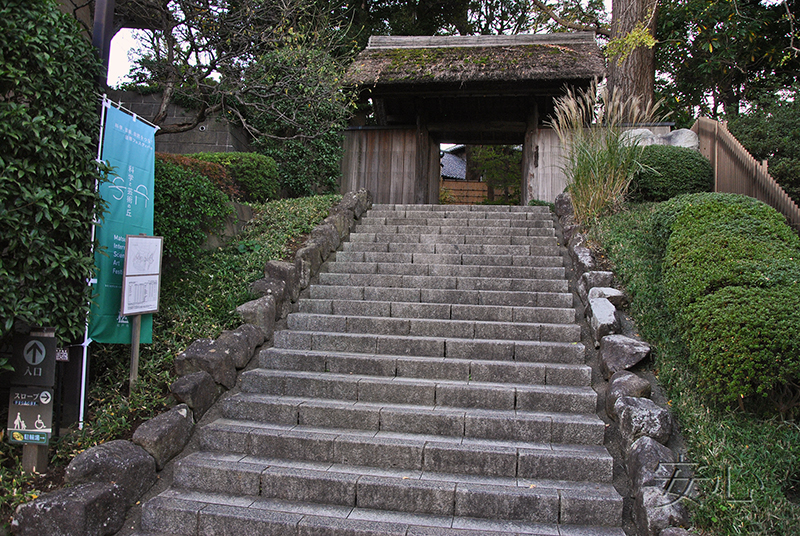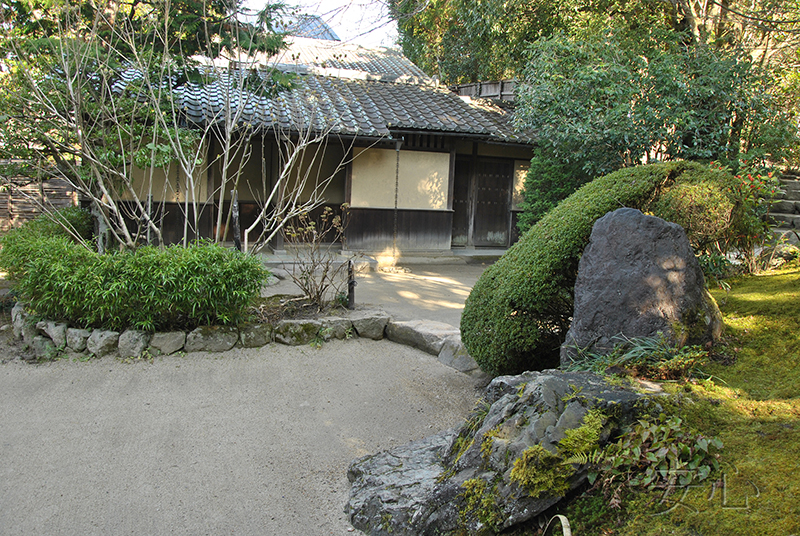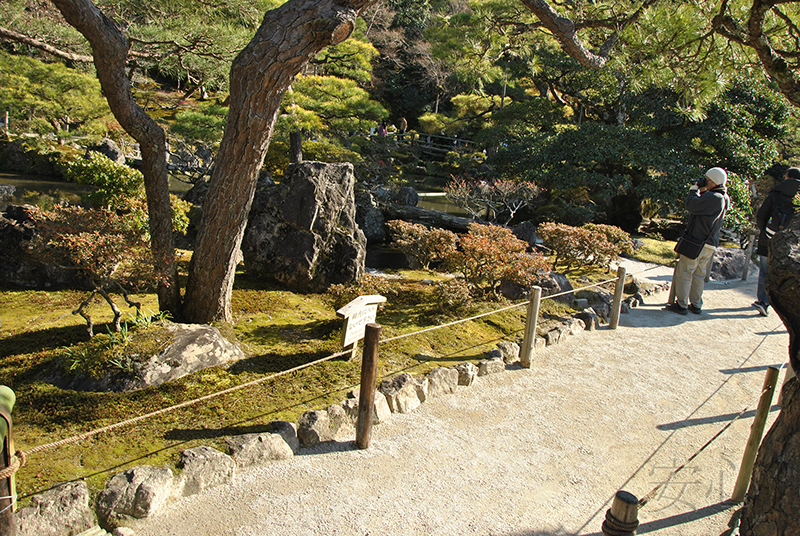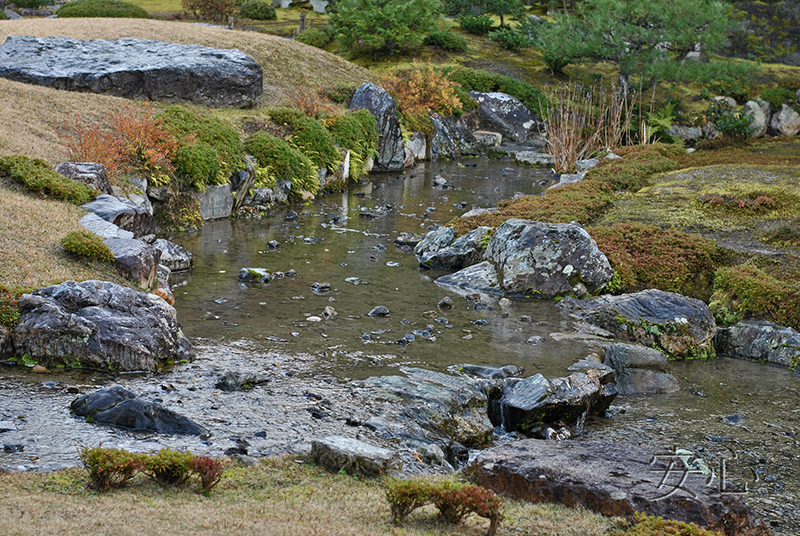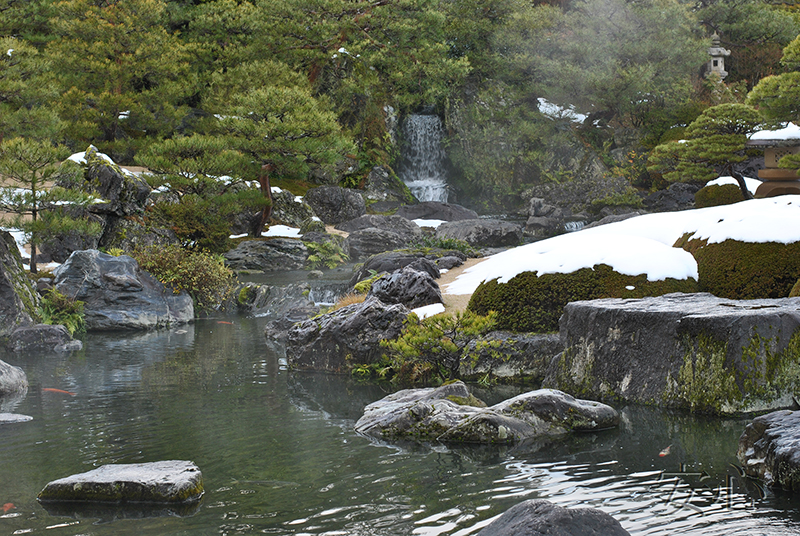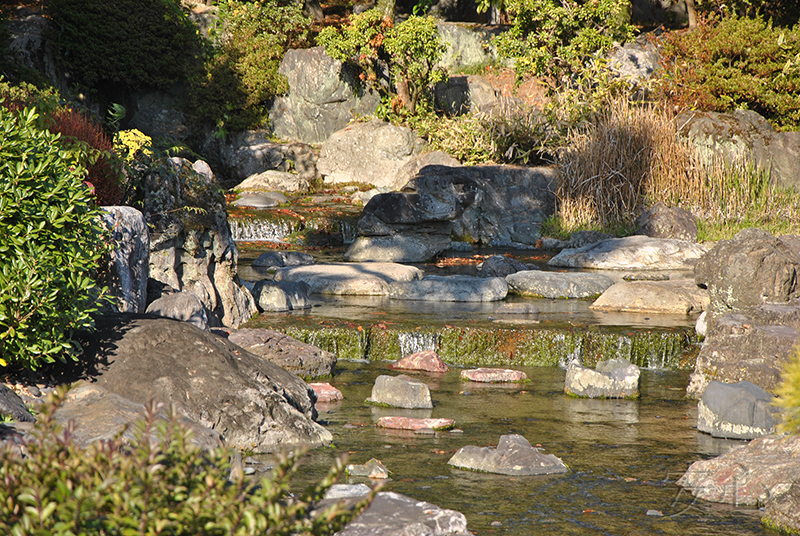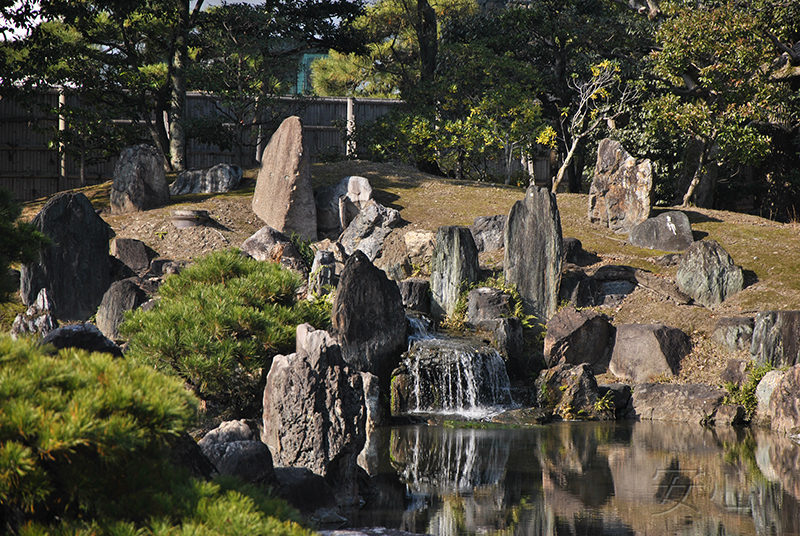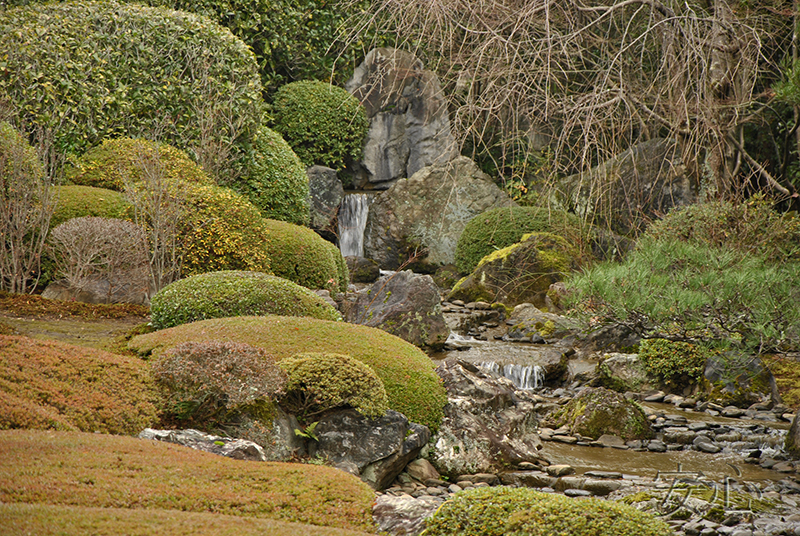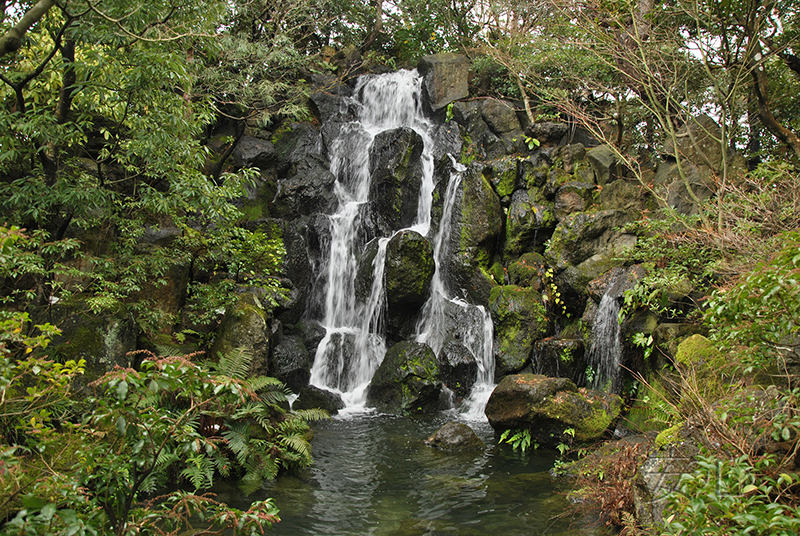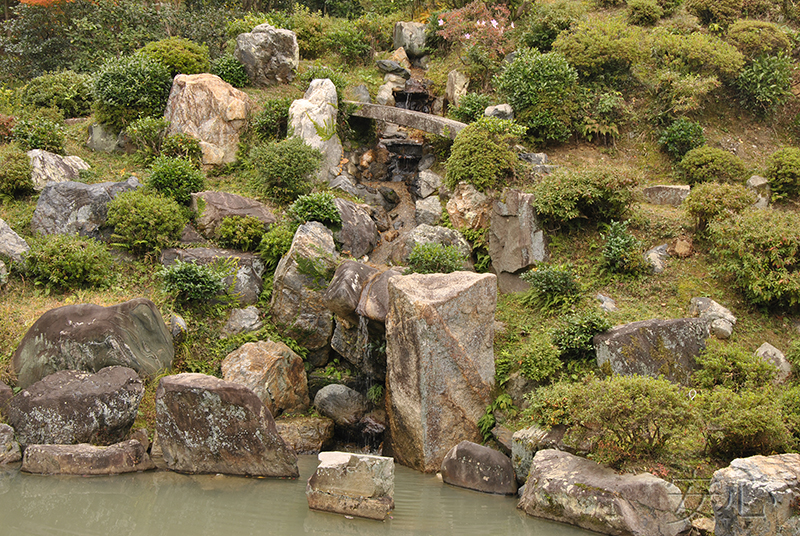
Rocks in Japanese gardens
Stone is the most important element of a Japanese garden. A Japanese garden may have no one Japanese lantern, no tsukubai, no real water, and even no plants. But there is no Japanese garden without stone.
Hasedera Temple Garden, Kamakura
The Japanese love of stones dates back to the Neolithic era. Ancient people believed that they were inhabited by deities. Large unique stones (iwakura) were girded with a special rope (shimenawa). The sacred place (Iwasaka) where they stood was also fenced off.
Iwakura sacred stone, Kyoto
Iwakura Sacred Stone, Meigetsu-in Temple Garden, Kamakura
Over time, people began to add others stones to the sacred stone. And then the entire composition began to consist of the brought stones. That was the beginning of Japanese garden.
With the arrival of Buddhism Japan got the image from the foreign cosmology of Mount Meru (Shumisen), the cosmic mountain at the center of the universe. Seven golden mountain ranges and an the eighth one of iron mountain range depart in circles. Between the mountains are the oceans whith floating islands. This Indian concept of the structure of the world came to Japanese gardens. So, a large stone depicting Meru, ponds (ocean), stones (nine mountains), islands were taken up by the Japanese garden. It reflected the idea of attaining Nirvana by meditation.
Sometimes in the garden you can see only the image of Mount Meru.
Mount Meru, Meigetsu-in Temple Garden, Kamakura
Or there can be a composition of stones, Shumisen, imitating the archipelago. As a rule, it should contain both vertical and horizontal stones, the highest one is located closer to the center, it symbolizes the divine Mount Meru.
Shumisen, Korin-in Temple Garden, Kyoto
In addition to Hindu cosmology, Taoist myths have had a tremendous influence on Japanese gardens. In particular, the Chinese myth about the five islands inhabited by people who achieved immortality and lived in perfect harmony. The islands were lying on the back of giant sea turtles, and the immortals flew around the lofty peaks of the islands on the back of cranes. Chinese emperors, wishing to get to these islands and to become immortals, sent many expeditions to find this place and to obtain the elixir of immortality, but they all failed. And then the Chinese emperor Wu decided to lure the immortals to his palace, building a garden resembling magic islands.
In Japan, this myth was also very popular. But the Japanese united five islands into one, Horai (Chinese - Penglai). In garden architecture, it can be an Horai island, Horai mountain, or even Horai rock.
Horai island, Koishikawa Korakuen Garden, Tokyo
Ordinary mortals cannot get to the sacred island, so usually it does not connect with the mainland in any way. However, as always, there are exceptions to the rule. For example, in the garden of Nijo Castle, there are stone bridges to Horai Island. This reflects a fundamental rethinking of the use of ancient myth in 17th century garden design. The Island of the Immortals no longer seems so inaccessible and distant for ordinary people, especially when it comes to such daimyo as Tokugawa Ieyasu.
Horai island, Ninomaru Garden, Nijo Castle, Kyoto
Two bridges to the Horay island, Ninomaru Garden, Nijo Castle, Kyoto
The renowned landscape designer Mirei Shigemori has dedicated one of his beautiful gardens to this theme.
Shofu-en (Horai-tei) garden of the Matsuo-taisha shrine, Kyoto
Turtle and Crane have become symbols of longevity. And the sacred islands are a symbol of eternal life and bliss.
Turtle island, Kencho-ji Temple Garden, Kamakura
Crane island, Seiryu-en garden, Kyoto
Turtle and Crane islands, Zuisen-ji Temple Garden, Kamakura
It should be noted that these islands can be completely different in size and shape. And these mythical animals are not always easy to recognize. Sometimes, in order to see them, you need to strain your imagination. This must be considered if you want to place a Turtle or Crane island in your garden. Often too similar images make the garden more European than Japanese. In Japanese garden, you need a hint, a stimulus to turn on the imagination, not a ready picture.
Turtle island, Saiho-ji Temple Garden, Kyoto
Crane island, Saiho-ji Temple Garden, Kyoto
Both of these myths, the Hindu myth about the structure of the Universe and the Taoist myth about the Islands of the Immortals, are often mix up. However, they have different origins, as well as different goals and ways to achieve the desired.
In the second half of the 11th century, appeared Sakuteiki, the classic manual of garden architecture. Much attention was paid to the arrangement of stones, especially the triads. The text distinguishes between two types of stone triads: horizontal and vertical. As the name implies, the stones should be properly placed in a horizontal plane.
Sanzen-in Temple Garden, Ohara
Taizo-in temple garden, Kyoto
The three stones arranged vertically represent the Buddhist triad, Sanzonseki. A large stone is usually located in the center, two smaller ones are placed on the sides of the main Buddha stone.
Komyo-in Garden of Tofuku-ji Temple, Kyoto
Interestingly, Shigemori Mirei placed three Buddhist triads at once in the Komyo-in garden, and they themselves form a triangle between themselves.
Komyo-in Garden of Tofuku-ji Temple, Kyoto
As a rule, Sandzonseki are made of tall stones. However, there are can be exceptions. So, in the famous moss garden of Saiho-ji temple, the Buddhist triad consists of three low stones, and without knowing it, it is easy to miss it.
Saiho-ji Temple Garden, Kyoto
In Sakuteiki, it is especially clear how reverently the Japanese treated stones. Stones are not as a kind of matter, but as something animated, special, with their own personalities, what must be treated with respect and love. Before starting to place stones, the gardener must achieve inner silence and emptiness. Only in this state he could hear the "requests" of the stones. Then the stones had to be brought into the garden, the vertical ones should be placed with their heads up, and the horizontal ones should be placed face up, and only after that they should be distributed across the garden.
In Sakuteiki the term meaning dry mountain water, karesansui, was mentioned first. However, until a certain time, this concept was used only for small stone compositions found in large gardens with a pond and islands.
Stones acquired a special role during the time of Kamakura and Muromachi, a long period of conflicts and wars. In that time the karesansui, or dry landscape garden appears. Its austere architecture reflects the tastes of samurai and Zen priests, who needed a garden not for pleasure, but for contemplation and meditation.
First, dry waterfalls appear in several temples. One of the first is the dry waterfall at Saiho-ji Temple. It is believed that the author of this work was a priest, a Zen master, Muso Kokushi.
Saiho-ji Temple Garden, Kyoto
He was also the abbot of Tenryuji Monastery, where another wonderful dry waterfall was built. True, the author was no longer Muso Kokushi himself.
Tenryu-ji Temple Garden, Kyoto
There is another dry waterfall at Ginkaku-ji Temple.
Ginkaku-ji Temple Garden, Kyoto
There, for the first time in the history of the Japanese garden, sand was used to create the ocean and mountains. In this regard, Ginkaku-ji became a harbinger of the dry landscape, karesansui.
Ginkaku-ji Temple Garden, Kyoto
An example of pure karesansui, of course, is the famous dry garden of Ryoanji Temple. It is completely devoid of plants, except for some islets of moss. Fifteen stones are grouped in three, five and seven, and positioned within an area of raked sand. The garden has nothing to do with gardens for pleasure, it is solely for meditation. Looking at the stones, a person plunges into the world of nothingness, emptiness, he literally merges with the garden, feeling himself as a part of this big world.
Ryoan-ji Temple Garden, Kyoto
The dry landscape is becoming more and more popular. Zen priests and samurai, whose life can end at any moment, are not interested in the change of seasons or in sights, they want to know the deep secrets of human existence and nature. Abstract compositions, empty space, multi-layered symbolism come to the fore. Such gardens are of great importance in the history of the Japanese garden, as they can be considered native Japanese. If everything else, in one form or another, came from China and Korea, then dry gardens were and still are truly Japanese gardens.
Rock gardens can be seen in large areas and in small sites in front of temple buildings.
Yushi-en Garden, Matsue
Hokoku-ji temple garden, Kamakura
Sometimes there are no stones at all, only white sand, helping tune in to meditation.
Entoku-in Temple Garden, Kyoto
And sometimes plants play the role of stones. As, for example, in the Shoden-ji garden. The author of this garden was Kobori Enshu.
Shoden-ji Temple Garden, Kyoto
The largest rock garden in Japan (2349 square meters) is located high in the mountains, in the Kongobuji Temple. It represents a pair of dragons emerging from a sea of clouds to protect the temple. The buildings of the temple are in the center, and the garden literally flows arounf them. Because of this, it's almost impossible to take a photo to include everything. So I had to break this garden apart. On the first photo the Dragon turns the corner, and on the next picture you can see his front part.
Banryutei Rock Garden, Kongobuji Temple, Koyasan
From the other side, the second Dragon is floating towards the first Dragon.
In Kongobu-ji temple there is another rock garden, but this time a small one, along the passage. It is worth noting here the color of the stones. Many people think that stones in a Japanese garden should be exclusively gray or black. In fact, the Japanese use a wide palette of colors, sometimes even in the same garden you can see gray, red, and green stones. The main thing is to find such balance so all this stones will be combined, and not look as kitsch.
Kongobu-ji Temple Garden, Koyasan
You cannot walk in the garden of stones, because the raked sand symbolizes water. At least you have to lay a stone path.
Jomyo-ji Temple Garden, Kamakura
Dry landscapes are popular to this day. In some cases, they have a philosophical meaning: the location and shape of stones, the absence of plants, the pattern on the gravel evoke various associations and thoughts among visitors. You can look at such pictures for hours and meditate. In this case, a light color of the dump is more appropriate, symbolizing purity, holiness.
Chishaku-in Temple Garden, Kyoto
Karesansui first appeared in Kyoto, and for this purpose Japanese designers used the sand from Shirakawa. It was weathered from granite and washed by river water. This sand was extremely clean and white, in keeping with the Muromachi dry garden concept.
In other gardens, gravel just plays the role of real water (if for some reason a pond is not provided), and then it is preferable to use darker colors (preferably gray) to emphasize the similarity with a stream or a pond.
Maruyama Park, Kyoto
In dry streams, both small and large pebbles can be used. Sometimes we even saw rather large and rough stones.
Jomyo-ji Temple Garden, Kamakura
Thus, stones are very important, and perhaps, it is the main elements of Japanese garden. The aesthetic perception and the philosophical content of the garden in the Japanese style depends on depends on our skills in selecting and arranging them.
It’s better to use so-called ‘torn’ stones instead of boulders. In Japanese mountains firm, crystalline rock which isn’t eroded prevails, so stones with cracks and splits are found.
stone in the garden of Ginkaku-ji Temple, Kyoto
Round stones are associated with water and look more natural on the banks of ponds.
Murin-an Garden, Kyoto
Adachi Museum Garden, Matsue
Although still more often the Japanese prefer weathered stones, even in water.
Maruyama Park, Kyoto
Various shallows can be made from large, smooth pebbles.
Seiryu-en garden, Kyoto
Koishikawa Koraku-en Garden, Tokyo
Of course, it takes practice and flair to arrange the stones naturally, as they are in nature, or as the Japanese masterfully do. But for a start it is good to learn a few rules, some of which are described in the ancient classic manual of garden architecture Sakuteiki.
Before you go to buy stones, you need to decide which ones you need. To do this, draw a plan, and then go out with it to the future garden. You need to look and imagine which stone is needed in what place. Along the way, write down the approximate size and shape of the stone. I use certain names-characteristics for stones, it will help later to find the right stone. It can be vertical cliffs, flat, slides, propping, stone-boat, stone-bench, dragon, carp, ledge in the rock, etc. The names may be very different, understandable only to you.
Stone boat in Ninomaru Garden, Kyoto
Stone in the garden of Hasedera temple, Kamakura
Private garden in Kyoto
After that, you can start to look for and to buy stones. If the area is large, and a lot of stones are required, I choose the main accent stones, and add a certain amount of "support", or auxiliary stones to them.
You need to start placing the stones with these main stones. They will determine the location of their companions. In groups, you should not combine elements of the same shape and size. The number must be odd.
The stones should form a non-isosceles triangle. This applies to both triads and larger compositions. The stone groups will also look good in a non-isosceles triangle.
Saiho-ji Temple Garden, Kyoto
Chishaku-in Temple Garden, Kyoto
Adachi Museum Garden, Matsue
Avoid symmetry and finding stones on the same line. Moreover, this should be checked not from one viewpoint, but from different sides.
The stability of the stone is very important. Moreover, not only from the point of view of safety, but also for visual perception. Be ready that many stones will have to be decently buried in the ground. Consider this when choosing a size. Small stones also need to be dug a little. Then there will be a complete feeling that they have always been here, but not as you just brought them and threw to the ground.
Stone in the garden of Hashimoto Kansetsu, Kyoto
You can emphasize the beauty of a single stone with a small beautiful plant.
Street in Kyoto
In general, stones surrounded by plants are found literally everywhere in Japan. It looks really great, although it does take some skill when clipping the plants.
Shofu-en Garden (Kyokusui-tei) of the Matsuo-Taisha Shrine, Kyoto
Shisen-do Temple Garden, Kyoto
Yoko-en Garden of Taizo-in Temple, Kyoto
Another impressive sight is the retaining walls of stone literally intertwined with plants.
Street in Yamatokoriyama
Nezu Museum Garden, Tokyo
Happo-en garden, Tokyo
Street in Kyoto
By the way, the Japanese fence literally everything with stones. This method will be very helpful when you need to distinguish, for example, pebbels and plants. The stones help the earth on small hills not to creep after heavy rains, while the plants grow. Depending on the purpose, such enclosing stones can be relatively large and different in shape.
Taizo-in temple garden, Kyoto
Entrance to Tojo Park, Tokyo
Or stones are matched to approximately one standard.
Shisen-do Temple Garden, Kyoto
Ginkaku-ji Temple Garden, Kyoto
Иногда встречаются даже камни округлой формы, уложенные в ряд.
Yoshiki-en garden, Nara
And, of course, the stones are of the greatest importance in the construction of streams and waterfalls. A fairly common method of laying out cascades with a flat stones is completely unsuitable for a Japanese garden. If you decide to make a stream or waterfall, study well the work of Japanese designers, pay attention to what stones they use, how they laid them and frame with plants.
Murin-an Garden, Kyoto
Adachi Museum Garden, Matsue
Sanzen-in Temple Garden, Ohara
Ninomaru Garden Waterfall, Nijo Castle, Kyoto
Waterfall in Yoko-en Garden, Taizo-in Temple, Kyoto
Waterfall in Yushi-en Garden, Matsue
Waterfall in the garden of Chishaku-in temple, Kyoto
anshin©2011All rights reserved. When using the materials of the site, reference is obligatory.
Proposals for co-operation, as well as comments and suggestions on the site please send to the address: anshinsad@gmail.comtel: +7 (965) 121-80-60, 10am-20pm
